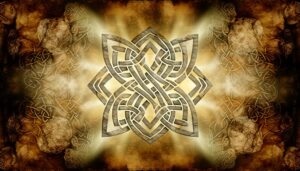Tracing the Pagan Origins of the Cross Symbol
The cross, often associated with Christianity, also has origins in ancient pagan traditions. Civilizations such as the Egyptians, Sumerians, and Celts used cross-like symbols to represent life, fertility, and the intersection of earthly and divine domains.
For example, the Egyptian Ankh symbolized life, while the Norse Sun Cross signified the harmony between earth and cosmos. Pagan cultures imbued the cross with spiritual and cosmological significance long before it became a Christian icon associated with crucifixion and resurrection.
This historical context highlights the adaptive nature of religious symbols, illustrating how the cross shifted from pagan to Christian use. Discover more about this fascinating evolution.
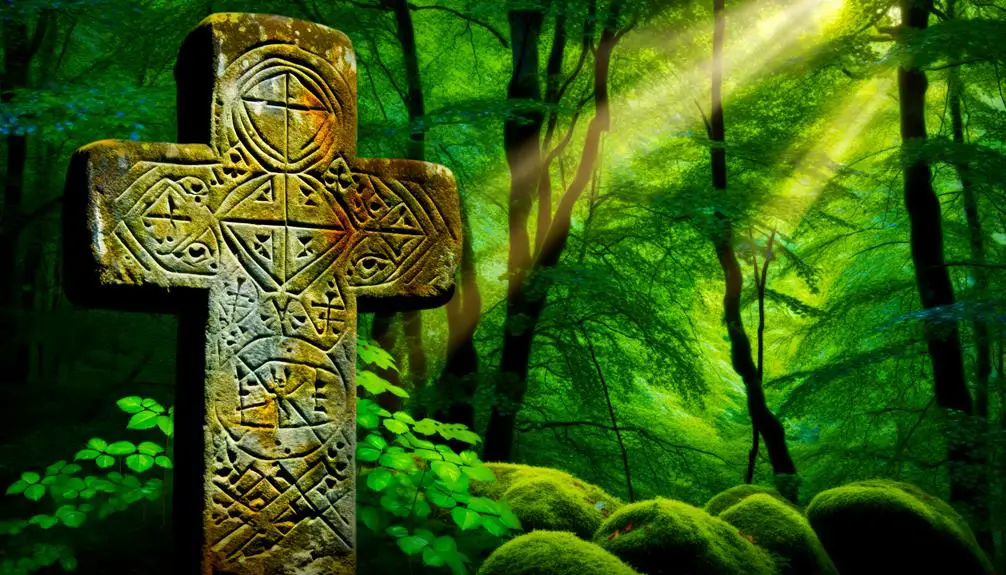
Key Takeaways
- The cross has origins in ancient pagan civilizations like Egypt, Sumeria, and Celtic cultures.
- In pagan traditions, the cross symbolized life, fertility, and the union of opposites.
- The Egyptian Ankh represented life and immortality, often depicted with deities and pharaohs.
- The Norse Sun Cross denoted the cyclical nature of time and harmony between earth and cosmos.
- The cross was rebranded in Christianity to symbolize crucifixion, resurrection, and eternal life.
Origins of the Cross
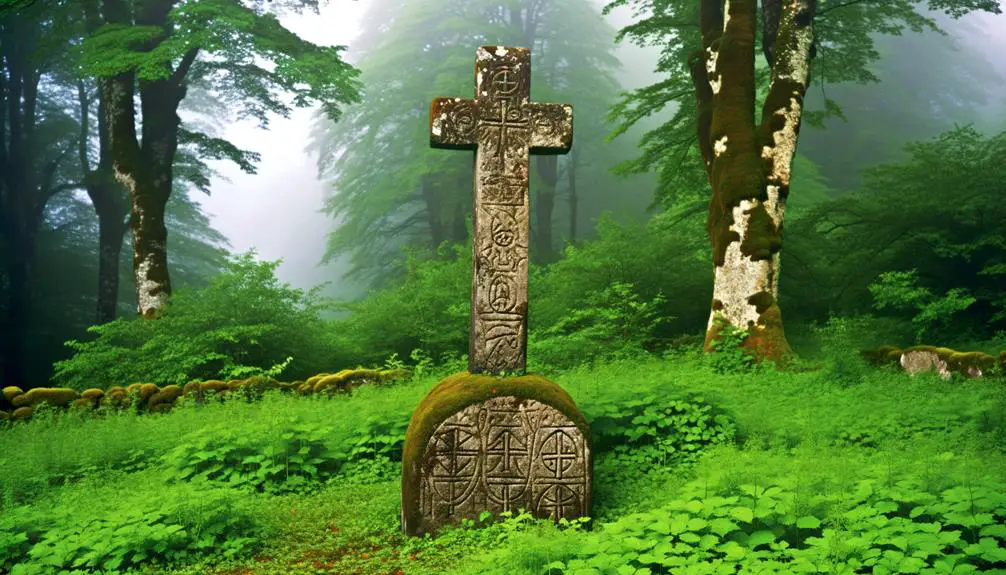
The origins of the cross can be traced back to ancient civilizations where it served as a potent symbol in various pagan religions long before its association with Christianity.
Archaeological evidence shows that the cross was venerated in cultures ranging from the ancient Egyptians to the Sumerians and the Celts. It often represented themes such as life, fertility, and the union of opposites.
In these early contexts, the cross was not merely a religious icon but also a cosmological diagram, embodying the intersection of the earthly and the divine.
The Egyptian Ankh
Often seen as a precursor to later cross symbols, the Egyptian Ankh held profound significance in ancient Egyptian culture, symbolizing life and immortality. Its unique shape, resembling a cross with a loop at the top, made it an enduring emblem in various artifacts and hieroglyphs. The Ankh was frequently depicted in the hands of deities, reinforcing its association with divine protection and eternal life.
| Feature | Meaning |
|---|---|
| Shape | Cross with a loop |
| Symbolism | Life and immortality |
| Cultural Role | Religious and royal |
| Depicted With | Deities and pharaohs |
The Ankh's recurring presence in tombs and temples underscores its integral role in rituals and beliefs about the afterlife. This symbol's enduring legacy highlights its importance in the cultural and spiritual life of ancient Egypt.
The Norse Sun Cross
In contrast to the Egyptian Ankh, the Norse Sun Cross, characterized by a circle intersected by a cross, emerged as a potent symbol in Norse mythology, signifying the cyclical nature of time and the harmony between the earth and the cosmos.
This symbol, often associated with the sun, represented the interconnectedness of life and the seasons, essential to the agricultural societies of the Norse people. The circle denotes eternity and the universe, while the cross signifies the cardinal directions, implying balance and order.
The Norse Sun Cross also served as a talisman for protection and was a common motif in various artifacts, underscoring its significance in the spiritual and everyday life of the Norse community.
The Celtic Cross
Rooted in early medieval Ireland, the Celtic Cross is a prominent symbol that merges Christian and pagan elements, reflecting the syncretism of cultural beliefs during that period.
Characterized by a central ring intersecting the cross's arms, this design is believed to symbolize the unity of heaven and earth. The introduction of this motif may have been an effort to facilitate the shift from pagan traditions to Christian practices.
The ring may represent the sun or eternity, common motifs in pre-Christian Irish culture.
The cross often incorporates intricate knotwork, indicative of Celtic artistry.
Initially used in ecclesiastical settings, it later became a broader cultural emblem.
This convergence underscores the adaptive nature of religious symbols.
The Greek Tau Cross

Another significant symbol intersecting pagan and Christian traditions is the Greek Tau Cross, which predates the Latin cross and holds profound historical and theological connotations.
The Tau, resembling the letter 'T', was initially used in ancient Egypt and later adopted by Greek and Roman societies. In these early contexts, it symbolized life, resurrection, and divinity.
Christian adoption of the Tau Cross is attributed to its shape, reminiscent of the crucifixion device, and its association with eternal life through Christ's sacrifice. The Tau also holds relevance in the Hebrew alphabet as the last letter, symbolizing completion and fulfillment.
This cross bridges pre-Christian spirituality and Christian theology, illustrating the syncretic evolution of religious symbols.
Hindu Swastika
The Hindu Swastika, a symbol with ancient origins, represents auspiciousness, prosperity, and good fortune in Hindu culture. Its etymology traces to the Sanskrit word 'svastika,' meaning 'well-being.'
The symbol's design, featuring an equilateral cross with four arms bent at right angles, is prevalent in religious ceremonies, temple architecture, and festive decorations.
Importantly, the Swastika's orientation and meaning differ from the Western perception influenced by its appropriation during the 20th century.
Key aspects of the Hindu Swastika include:
- Cultural significance: Integral in rituals and festivals.
- Symbolism: Represents the sun, indicating life and energy.
- Variations: Different forms exist, such as the right-facing (clockwise) and left-facing (counterclockwise) Swastikas.
Understanding the Swastika's context is essential for appreciating its positive connotations within Hinduism.
Native American Cross Symbols
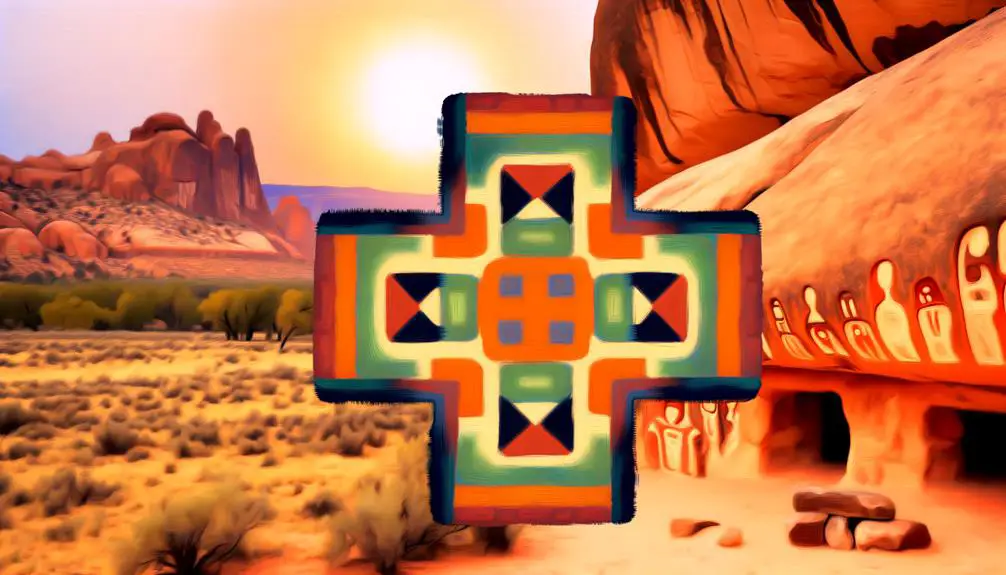
Native American cultures have utilized various cross symbols, each embedded with distinct cultural significance and symbolic meanings.
These symbols often represent cardinal directions, balance, or the intersection of the spiritual and physical worlds.
Understanding the interpretations attributed to these cross symbols provides valuable insight into the rich tapestry of Native American belief systems and their worldviews.
Cultural Significance Explained
In Native American cultures, the cross symbol often embodies profound spiritual and cosmological significance, representing the intersection of the physical and spiritual worlds. This symbol is not merely a geometric figure but a profound emblem rooted in indigenous traditions.
Its cultural significance can be understood through various perspectives:
- Directional Symbolism: The cross frequently represents the four cardinal directions, signifying balance and harmony in the universe.
- Life Cycles: It embodies the cyclical nature of life, encompassing birth, growth, death, and rebirth.
- Sacred Space: The cross marks a sacred space where ceremonies and rituals connect the community with the spiritual domain.
Understanding these elements provides a deeper appreciation of the cross's role within Native American cultural frameworks.
Symbolic Meanings and Interpretations
Understanding the symbolic meanings and interpretations of cross symbols within Native American cultures necessitates an exploration of their nuanced roles in embodying spiritual and cosmological concepts.
Primarily, the cross often signifies the four cardinal directions, which are integral to Native American worldviews. Each direction corresponds to specific elements, deities, and seasons, forming a detailed framework for understanding the universe.
Additionally, the intersection of the cross symbolizes the union of earth and sky, emphasizing balance and harmony. This symbol is not merely geometric but serves as a sacred representation of life's interconnectedness.
These interpretations highlight the profundity of cross symbols in Native American traditions, illustrating their intricate spiritual and cosmological insights.
Crosses in Pre-Columbian Cultures
Archaeological findings reveal that the cross was a recurring motif among indigenous civilizations such as the Maya, Aztec, and Inca. The symbol's interpretations varied across these cultures:
- Maya: The cross, often associated with the World Tree (Ceiba), symbolized the axis mundi, connecting the heavens, earth, and underworld.
- Aztec: Representations of the cross are linked to the four cardinal directions, each governed by a deity, signifying balance and order.
- Inca: Crosses, particularly in the form of the Chakana, were emblematic of the three domains of existence: the underworld, earthly plane, and spiritual domain.
These diverse interpretations underscore the cross's multifaceted significance in Pre-Columbian societies.
Transition to Christian Symbolism
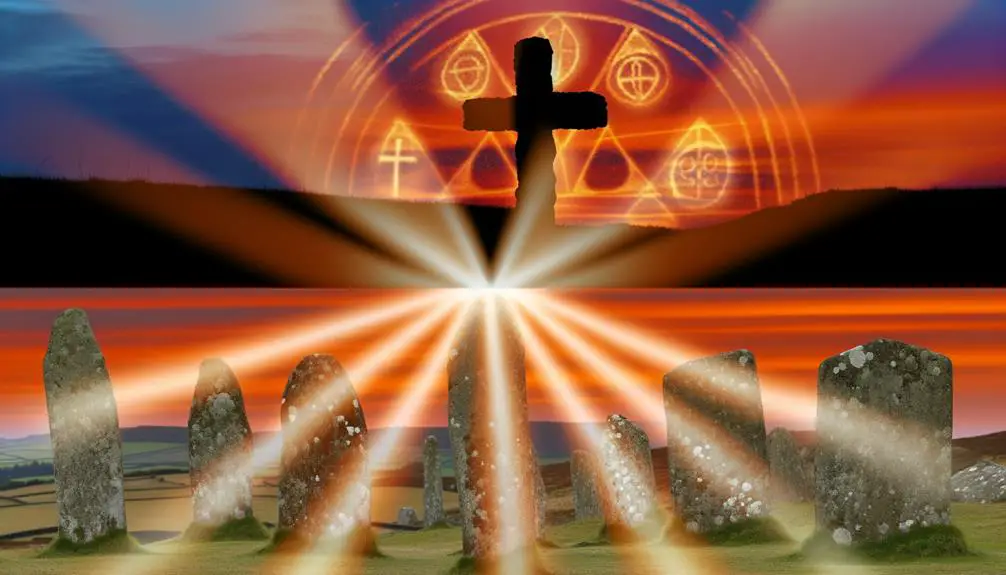
The evolution of the cross from a multifaceted symbol in various ancient cultures to a central emblem of Christian faith underscores a significant shift in religious iconography and meaning.
Initially, the cross held diverse interpretations, ranging from representations of the sun and natural elements to complex spiritual and cosmological concepts.
With the advent of Christianity, the cross was recontextualized to symbolize the crucifixion and resurrection of Jesus Christ, becoming a potent emblem of sacrifice, redemption, and eternal life.
This change reflects both the adaptive nature of religious symbols and the strategic rebranding undertaken by early Christians to differentiate their faith while integrating familiar iconography.
Consequently, the cross evolved from a generic pagan symbol to a defining marker of Christian identity.
Conclusion
The cross, an omnipresent symbol, transcends its association with Christianity, deeply rooted in diverse pagan traditions. From the Egyptian Ankh and the Norse Sun Cross to the Celtic and Greek Tau Crosses, its iterations are manifold.
Additionally, the Hindu Swastika and Native American cross symbols exemplify its global pervasiveness. Even in pre-Columbian cultures, the cross held significant meaning. This rich tapestry of cultural intersections underscores the cross as an ancient, multifaceted emblem, predating and informing its eventual Christian adoption.

